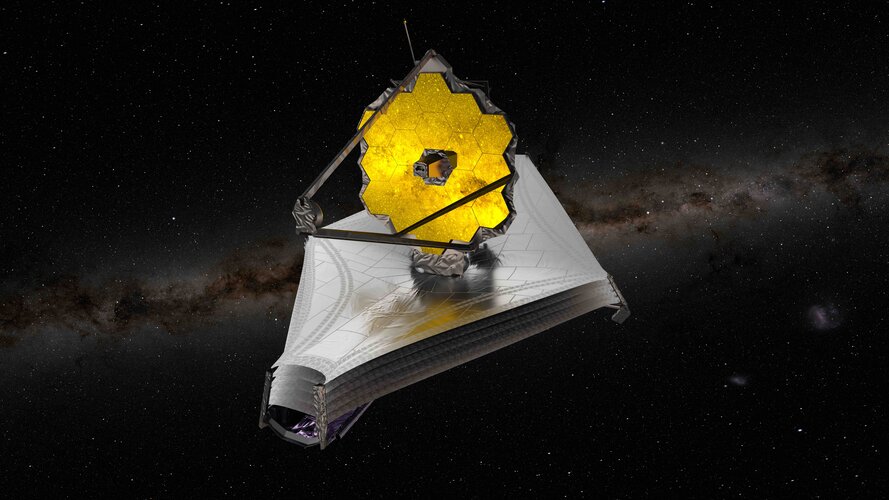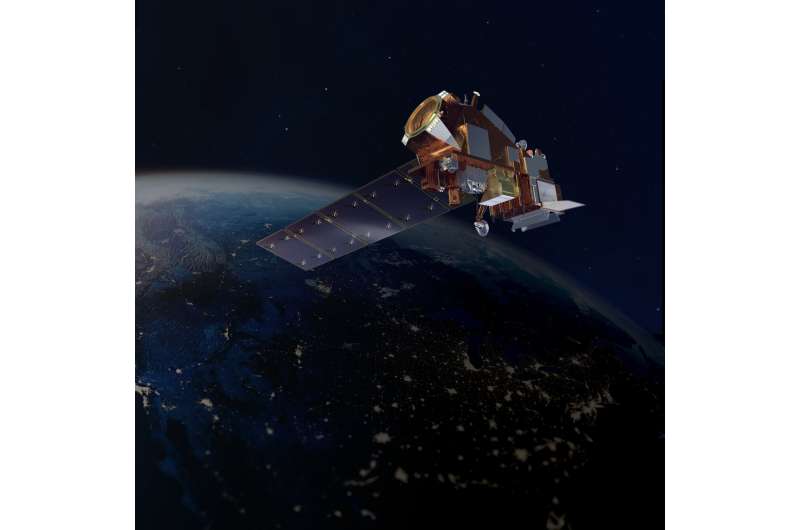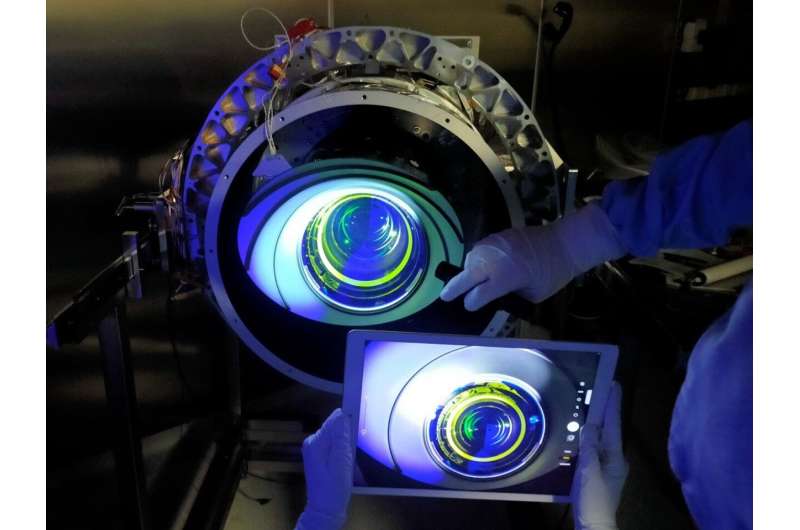
Copernical Team
Looking ahead to Webb’s first images

The NASA/ESA/CSA James Webb Space Telescope will release its first full-colour images and spectroscopic data on 12 July 2022.
NASA eyes November for launch of NOAA's JPSS-2

NASA and the National Oceanic and Atmospheric Administration (NOAA) are now targeting Nov. 1, 2022, as the new launch date for NOAA's Joint Polar Satellite System-2 (JPSS-2) satellite mission. During recent tests of a key instrument designed to collect visible and infrared images, the team found and corrected an issue, which resulted in additional time needed to complete thermal vacuum testing.
The Visible Infrared Imaging Radiometer Suite instrument, or VIIRS, experienced a test equipment issue during thermal vacuum testing. Engineers determined the issue was the result of the movement of test equipment caused by temperature fluctuations during the test. After modifying the test set up, the team retested the system, and it demonstrated excellent performance.
JPSS-2, the third satellite in the Joint Polar Satellite System series, is scheduled to lift off from the Vandenberg Space Force Base in California, on a United Launch Alliance (ULA) Atlas V rocket.
Euclid gains solar power and protection
 Video:
00:02:54
Video:
00:02:54
Spacecraft are not so different to humans – whilst the Sun can be a great source of vital energy, both people and machines must also be protected from its harmful effects.
In this video, engineers at Thales Alenia Space in Turin are attaching a combined sunshield and solar panel module to the main body of ESA’s Euclid spacecraft. This process took place on 23 May 2022 and lasted an entire day.
The module has two functions: whilst the solar panels will provide the spacecraft with power, the sunshield will shade the instrument-carrying payload module from
ESA conducts first tests of exoplanet hunter Plato in space-like conditions

Mitsubishi Electric develops innovative laser comms terminal
 Mitsubishi Electric has developed the prototype of what is believed to be the world's first* optical receiver for use in laser communication terminals (LCTs), that integrates space optical communication using laser beams and a function to detect the direction of received beams in the 1.5-um band, a general-purposeband used for terrestrial optical fiber communications and other applications.
Mitsubishi Electric has developed the prototype of what is believed to be the world's first* optical receiver for use in laser communication terminals (LCTs), that integrates space optical communication using laser beams and a function to detect the direction of received beams in the 1.5-um band, a general-purposeband used for terrestrial optical fiber communications and other applications. Media invitation: new details about our Milky Way in the third Gaia data release

Media representatives are invited to join a virtual press event at 13 June 2022 from 10:00 to 11:00 CEST, to learn more about the new data set to be released by ESA’s Gaia mission.
NASA eyes November launch of NOAA's JPSS-2
 NASA and the National Oceanic and Atmospheric Administration (NOAA) are now targeting Nov. 1, 2022, as the new launch date for NOAA's Joint Polar Satellite System-2 (JPSS-2) satellite mission. During recent tests of a key instrument designed to collect visible and infrared images, the team found and corrected an issue, which resulted in additional time needed to complete thermal vacuum testing.
NASA and the National Oceanic and Atmospheric Administration (NOAA) are now targeting Nov. 1, 2022, as the new launch date for NOAA's Joint Polar Satellite System-2 (JPSS-2) satellite mission. During recent tests of a key instrument designed to collect visible and infrared images, the team found and corrected an issue, which resulted in additional time needed to complete thermal vacuum testing. MDA deploys a second set of cubesats in space
 Building on the successful launch and deployment of its first two CubeSat Networked Communications Experiment (CNCE) Block 1 space vehicles last June, the Missile Defense Agency launched two CNCE Block 2 CubeSats May 25, 2022 aboard a SpaceX Falcon 9 rocket. Successful communications with both CubeSats was confirmed on May 31, 2022.
The new mission is a planned follow-on to the Block 1 suc
Building on the successful launch and deployment of its first two CubeSat Networked Communications Experiment (CNCE) Block 1 space vehicles last June, the Missile Defense Agency launched two CNCE Block 2 CubeSats May 25, 2022 aboard a SpaceX Falcon 9 rocket. Successful communications with both CubeSats was confirmed on May 31, 2022.
The new mission is a planned follow-on to the Block 1 suc Planet parade to grace the dawn sky this month
 The delightful view of all five naked-eye planets will greet early risers throughout the month of June. While seeing two or three planets close together (in what's known as a conjunction) is a rather common occurrence, seeing five is somewhat more rare. And what's even more remarkable about this month's lineup is that the planets are arranged in their natural order from the Sun.
Throughout
The delightful view of all five naked-eye planets will greet early risers throughout the month of June. While seeing two or three planets close together (in what's known as a conjunction) is a rather common occurrence, seeing five is somewhat more rare. And what's even more remarkable about this month's lineup is that the planets are arranged in their natural order from the Sun.
Throughout The Sun is spinning round again
 All was amiss with the Sun! In the early 2000s, a new set of data brought down the chemical abundances at the surface of the Sun, contradicting the values predicted by the standard models used by astrophysicists. Often challenged, these new abundances made it through several new analyses. As they seemed to prove correct, it was thus up to the solar models to adapt, especially since they serve as
All was amiss with the Sun! In the early 2000s, a new set of data brought down the chemical abundances at the surface of the Sun, contradicting the values predicted by the standard models used by astrophysicists. Often challenged, these new abundances made it through several new analyses. As they seemed to prove correct, it was thus up to the solar models to adapt, especially since they serve as 